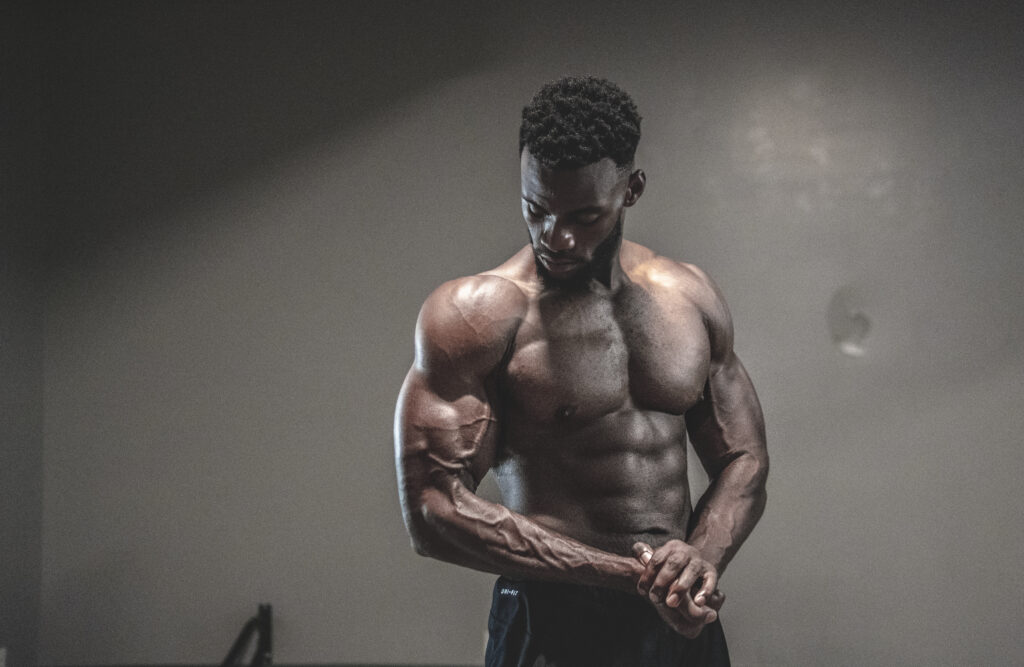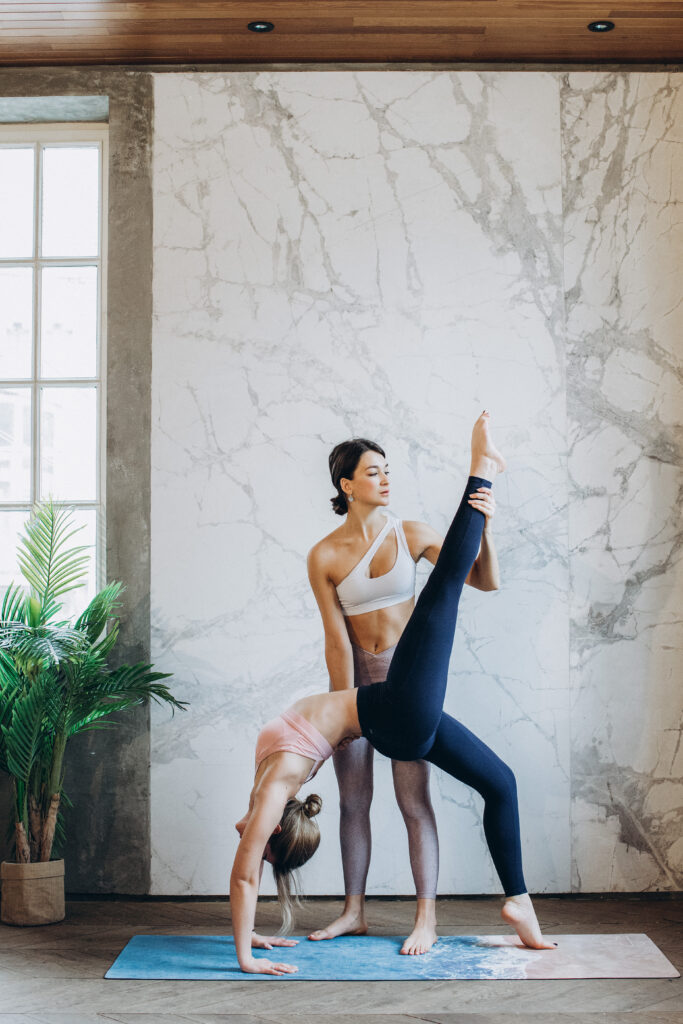When it comes to creating an effective exercise routine, one of the most common questions people have is: “How long should my workouts be?” It’s a valid concern, as balancing the demands of work, family, and personal commitments can make finding the right amount of time to dedicate to exercise challenging. In this article, we will explore the optimal length of workouts, taking into consideration different factors such as fitness goals, energy levels, and overall time availability. So, if you’ve ever wondered how much time you should set aside for your workouts, keep reading for some friendly guidance and insights.

This image is property of images.pexels.com.
Benefits of Different Workout Lengths
When it comes to working out, there is no one-size-fits-all approach. Different people have different fitness levels, goals, and time availability. That’s why it’s important to consider the benefits of different workout lengths. Whether you prefer quick, intense sessions or longer, more leisurely workouts, there are advantages to be found in each.
Short Workouts
Short workouts, typically lasting anywhere from 10 to 30 minutes, are perfect for those with a busy schedule or just starting out on their fitness journey. They may not seem like much, but don’t be fooled by their brevity. Short workouts can still provide numerous benefits and help you stay on track with your fitness goals.
Definition
Short workouts, as the name suggests, are exercise routines that require a minimal investment of time. These workouts are designed to be efficient and maximize the time you have available.
Benefits
One of the key benefits of short workouts is that they can easily be incorporated into your daily routine. They can be done at home, in the office, or even during a lunch break. Short bursts of exercise have been shown to improve cardiovascular health, promote weight loss, and boost your overall mood. They are also great for building consistency and forming a habit, as they require less time commitment.
Recommended Duration
The recommended duration for short workouts is typically between 10 to 30 minutes. This time frame allows you to perform a variety of exercises and target different muscle groups. While it may not seem like much, remember that consistency is key. Even a short workout done regularly can lead to significant improvements.
Sample Workout
Here’s a sample short workout routine you can try:
- Warm up with 5 minutes of light cardio such as jogging in place or jumping jacks.
- Perform 3 sets of push-ups, aiming for 10-15 repetitions in each set.
- Move on to bodyweight squats, performing 3 sets of 12-15 repetitions.
- Finish off with a plank hold, aiming for 3 sets of 30 seconds each.
- Cool down with 5 minutes of stretching.
Medium-Length Workouts
Medium-length workouts typically last between 30 to 60 minutes and are suitable for individuals with a moderate fitness level and a bit more time to spare. These workouts provide a balance between effectiveness and time commitment, allowing you to achieve a solid workout without feeling rushed.
Definition
Medium-length workouts are slightly longer than short workouts but shorter than the more time-consuming long workouts. They aim to provide a comprehensive exercise routine that engages multiple muscle groups and cardiovascular endurance without overwhelming time constraints.
Benefits
One of the main benefits of medium-length workouts is the ability to target specific areas and goals more effectively. With a longer duration, you can incorporate a wider range of exercises, including both strength training and cardiovascular exercises. These workouts can help improve muscle tone, increase calorie burn, and enhance overall fitness levels.
Recommended Duration
The recommended duration for medium-length workouts is typically between 30 to 60 minutes. This allows ample time for a warm-up, a combination of strength and cardio exercises, and a cool-down period. It’s important to listen to your body and choose exercises that align with your fitness level and goals.
Sample Workout
Here’s a sample medium-length workout routine you can try:
- Warm up with 10 minutes of light cardio such as jogging or cycling.
- Incorporate compound exercises such as squats, lunges, and push-ups, aiming for 3 sets of 10-12 repetitions for each exercise.
- Include cardiovascular exercises like running, cycling, or jumping rope for 20 minutes.
- Finish off with a core workout, targeting exercises like planks, bicycle crunches, and Russian twists for 10 minutes.
- Cool down with 5-10 minutes of stretching.
Long Workouts
For those with more time to dedicate to their fitness routine and a higher fitness level, long workouts can offer a more comprehensive and challenging experience. Long workouts typically last over an hour and are ideal for individuals who have specific goals or enjoy spending more time at the gym.
Definition
Long workouts are extended workout sessions that allow for a deeper dive into various exercises and fitness activities. They are designed to provide a thorough workout that incorporates both strength training and cardiovascular exercises, allowing for greater calorie burn, muscle building, and endurance training.
Benefits
One of the main benefits of long workouts is the ability to focus on multiple fitness elements in one session. With a longer duration, you can incorporate different forms of exercise, such as strength training, cardio, and flexibility exercises. Long workouts are great for individuals looking to improve overall fitness levels, build muscle, and enhance endurance.
Recommended Duration
The recommended duration for long workouts is typically over an hour. It’s important to plan your workout ahead of time to ensure you have enough time to complete all the exercises without feeling rushed. However, it’s also crucial to listen to your body and not overexert yourself. Long workouts require proper fueling and hydration, so be sure to prepare accordingly.
Sample Workout
Here’s a sample long workout routine you can try:
- Warm up with 15 minutes of light cardio such as jogging, cycling, or rowing.
- Incorporate compound exercises such as deadlifts, bench press, squats, and shoulder presses, aiming for 3-4 sets of 8-10 repetitions for each exercise.
- Include 30-40 minutes of cardiovascular exercises such as running, swimming, or using the elliptical machine.
- Integrate flexibility exercises like yoga or Pilates for 15-20 minutes.
- Finish off with a cool-down period and 10-15 minutes of stretching.

This image is property of images.pexels.com.
Fitness Level
When deciding on the appropriate workout length, it’s essential to consider your fitness level. Different workout lengths cater to different fitness levels, ensuring that you are challenging yourself appropriately while avoiding injuries and burnout. Let’s explore how workout lengths align with different fitness levels.
Beginners
For beginners, starting with shorter workout durations is recommended. Gradually increasing the length and intensity of workouts allows your body to adapt and prevents excessive soreness or fatigue. Short workouts of 10-30 minutes provide a manageable starting point and allow you to build a foundation and develop consistency before progressing to longer sessions.
Intermediate
Intermediate fitness enthusiasts have likely built a decent level of strength and endurance. Medium-length workouts lasting between 30-60 minutes provide an opportunity to challenge yourself further and incorporate a variety of exercises. This helps prevent plateauing and promotes continuous growth and progress in your fitness journey.
Advanced
Advanced individuals who have been consistently working out for a prolonged period can benefit from longer and more intense workouts. Longer durations offer the ability to target specific goals, such as athletic performance or muscular development, through more complex and advanced exercise routines. Advanced individuals also have the discipline and fitness capacity to handle the demands of longer workouts.
Goals
Your fitness goals play a crucial role in determining the appropriate workout length. Whether you’re aiming for weight loss, muscle building, cardiovascular health, or increased flexibility, different workout lengths can help you achieve these objectives effectively.
Weight Loss
For weight loss goals, moderate to long workouts are beneficial. Longer durations allow for increased calorie burn and fat loss. Combining cardiovascular exercises with strength training in medium to long workouts helps build lean muscle mass, which further contributes to calorie burn even at rest.
Muscle Building
If your main goal is muscle building, longer workouts provide the opportunity to incorporate compound exercises and work multiple muscle groups. With more time dedicated to lifting weights and performing resistance training, longer durations allow for effective muscle hypertrophy and strength gains.
Cardiovascular Health
For improving cardiovascular health, any workout length can be beneficial as long as it includes aerobic exercises that elevate your heart rate. Shorter workouts can incorporate high-intensity interval training (HIIT) to maximize cardiovascular benefits, while longer sessions can involve steady-state cardio to develop endurance and stamina.
Flexibility
If flexibility is your primary goal, incorporating longer workout sessions with dedicated stretching and mobility exercises is essential. Longer durations allow for a more comprehensive flexibility routine, improving range of motion and reducing the risk of injuries.

This image is property of images.pexels.com.
Time Availability
Considering your schedule and the time you can allocate to working out is crucial in achieving consistency and adherence to your fitness routine. Your time availability can influence the appropriate workout length that suits your lifestyle.
Busy Schedule
If you have a busy schedule with limited time to spare, shorter workouts are your best bet. These quick sessions can easily fit into your day, whether it’s early in the morning, during a lunch break, or in the evening. By prioritizing shorter workouts, you can still maintain an active lifestyle and work towards your fitness goals without feeling overwhelmed.
More Free Time
If you have more free time available or enjoy spending longer periods at the gym, opting for medium to long workouts can be an excellent way to utilize your time effectively. Longer durations allow for more variety in exercises and the ability to challenge yourself in different fitness areas. They also provide an opportunity to focus on specific goals and dedicate time to proper warm-up and cool-down practices.
Intensity
The intensity of your workouts is another crucial factor to consider when deciding on the appropriate workout length. Different intensity levels require varying durations to ensure an effective and balanced workout.
Low
Low-intensity workouts, such as leisurely walks or gentle stretching, can be sustained for longer durations without excessive strain on the body. These types of workouts are suitable for active recovery days, improving overall mobility, or for individuals who are just starting their fitness journey.
Moderate
Moderate-intensity workouts, such as jogging or weightlifting at a moderate pace, typically require a medium workout length. This allows you to maintain the necessary effort and intensity while still meeting your desired fitness goals. Moderate workouts strike a balance between challenging your body and avoiding burnout or overexertion.
High
High-intensity workouts, like HIIT or heavy weightlifting, are designed to be short and intense bursts of activity. These workouts require maximum effort and can be sustained for shorter durations due to their demanding nature. High-intensity sessions, whether it’s a quick metabolic conditioning workout or a heavy lifting session, typically last between 10-30 minutes.
Type of Workout
The type of workout you choose to engage in also influences the appropriate workout length. Different workout types have varying demands and durations to ensure optimal results.
Strength Training
Strength training workouts focus on building muscular strength and endurance. These workouts typically involve lifting weights or using resistance bands. The duration of strength training workouts depends on factors like the number of exercises, sets, repetitions, and rest periods. Generally, a medium to long workout length is recommended to allow for adequate sets, repetitions, and recovery time between exercises.
Cardiovascular Exercise
Cardiovascular exercise targets the heart and lungs, aiming to improve cardiovascular health and endurance. The duration of cardiovascular workouts can vary based on intensity levels and goals. Short, intense cardio sessions like HIIT can be done in as little as 10 minutes, while longer duration cardio workouts, such as steady-state running or cycling, may range from 30 minutes to over an hour.
High-Intensity Interval Training
HIIT workouts involve short bursts of intense exercise followed by brief recovery periods. Due to their high intensity, these workouts are typically shorter in duration. Since the goal is to push your limits during the intense phases, HIIT workouts can be completed within 10-30 minutes.
In conclusion, the appropriate workout length depends on various factors, including fitness level, goals, time availability, intensity, and the type of workout. Short workouts are perfect for those with busy schedules or beginners just starting their fitness journey. Medium-length workouts offer a balanced approach and cater to intermediate fitness enthusiasts. Long workouts provide a more comprehensive workout for advanced individuals or those with specific goals. Understanding your own needs and preferences can help you choose the workout length that best suits you, ensuring an enjoyable and effective fitness routine. Remember, consistency is key, so make sure to find a workout length that you can maintain and enjoy for long-term success.


